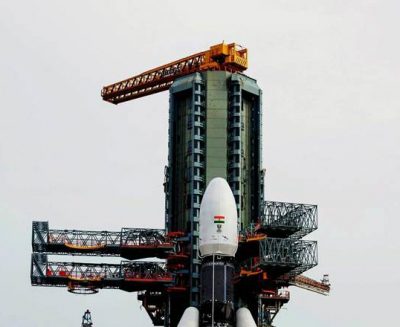Radar imaging Satellite – RISAT 2BR1 06/05/2019 – Posted in: Daily News
RADAR IMAGING SATELLITE- RISAT 2BR1
For: Preliminary & Mains
Topics covered: RISAT-1 & 2, Objectives and advantages, Radar satellites, Cartography satellites
News Flash
The Indian Space Research Organisation (ISRO) is set to launch its latest radar imaging satellite (RISAT), the RISAT-2BR1, by the end of May 2019 (expected on 22nd May) on one of the variants of the Polar Satellite Launch Vehicle (PSLV) reusable rocket (PSLV-C46) from the Sriharikota launch pad. Along with RISAT, ISRO will send up a cartography satellite Catosat-3. India will also launch two more defence satellites some time in July or August with its new rocket Small Satellite Launch Vehicle (SSLV).
The RISAT series by ISRO are first all-weather earth observation satellites. RISAT was first deployed in orbit on April 20, 2009.
Radar Imaging Satellite
Optical remote sensing satellites rely on sunlight being reflected back into space from the ground. They do not work in darkness and their view can be obstructed by clouds.
Radar satellites send out radio signals and record the echos that return. They can image the ground even at the night and are unaffected by cloud cover.
RISAT – Different Operating Modes
- MRS Mode: MRS is a medium resolution mode with 25 metres resolution
- CRS Mode: CRS is a coarse resolution mode with 50 metres resolution
- FRS Mode: FRS covers two fine resolution modes with resolutions from 3 metres to 12 metres
- Spotlight Mode: Spotlight mode provides one-metre resolution
Cartography satellite
The Cartosat series of satellites are a type of earth observation satellites indigenously built by India. The Cartosat series is a part of the Indian Remote Sensing Programme. They were specifically launched for Earth’s resource management and monitoring.
RISAT-1
- RISAT-1 was expected to be released first after the incident of the 2008 terror attacks in Mumbai in dire need of round the clock survelliance.
- RISAT-1 With the C-band SAR, being built by Inda, not being ready in time. RISAT-2 was deployed before RISAT-1.
- RISAT-1 was successfully launched on 26 April 2012 for a period of five years. It is first indigenous microwave remote sensing satellite designed and developed by ISRO.
RISAT-2
- RISAT-2, uses synthetic aperture radars (SAR) to provide Indian forces with all-weather surveillance and observation.
- RISAT-2, which was based on the X-band SAR- technology built by the Israel Aerospace Industries.
- The X-band SAR used by RISAT-2 was obtained from Israel in return for launch services for the Israeli TecSAR satellite.
- The SAR sensor enables RISAT-2 to return images at any time of day and in all weather conditions.
RISAT-2BR1
RISAT-2BR1 satellite uses same SAR band and will further improve India’s imaging reconnaissance (surveillance) abilities.
Polar Satellite Launch Vehicle (PSLV)
PSLV is the third generation launch vehicle of India. It is the first Indian launch vehicle to be equipped with liquid stages. It was developed to allow India to launch its Indian Remote Sensing (IRS) satellites into sun-synchronous orbits. PSLV can also launch small size satellites into Geostationary Transfer Orbit (GTO).
Source: Economic times
You can follow us on LinkedIn and for more updates related to UPSC IAS Preparation, Like our Facebook Page and subscribe our Diligent IAS Youtube Channel
Also Read Related Daily News

